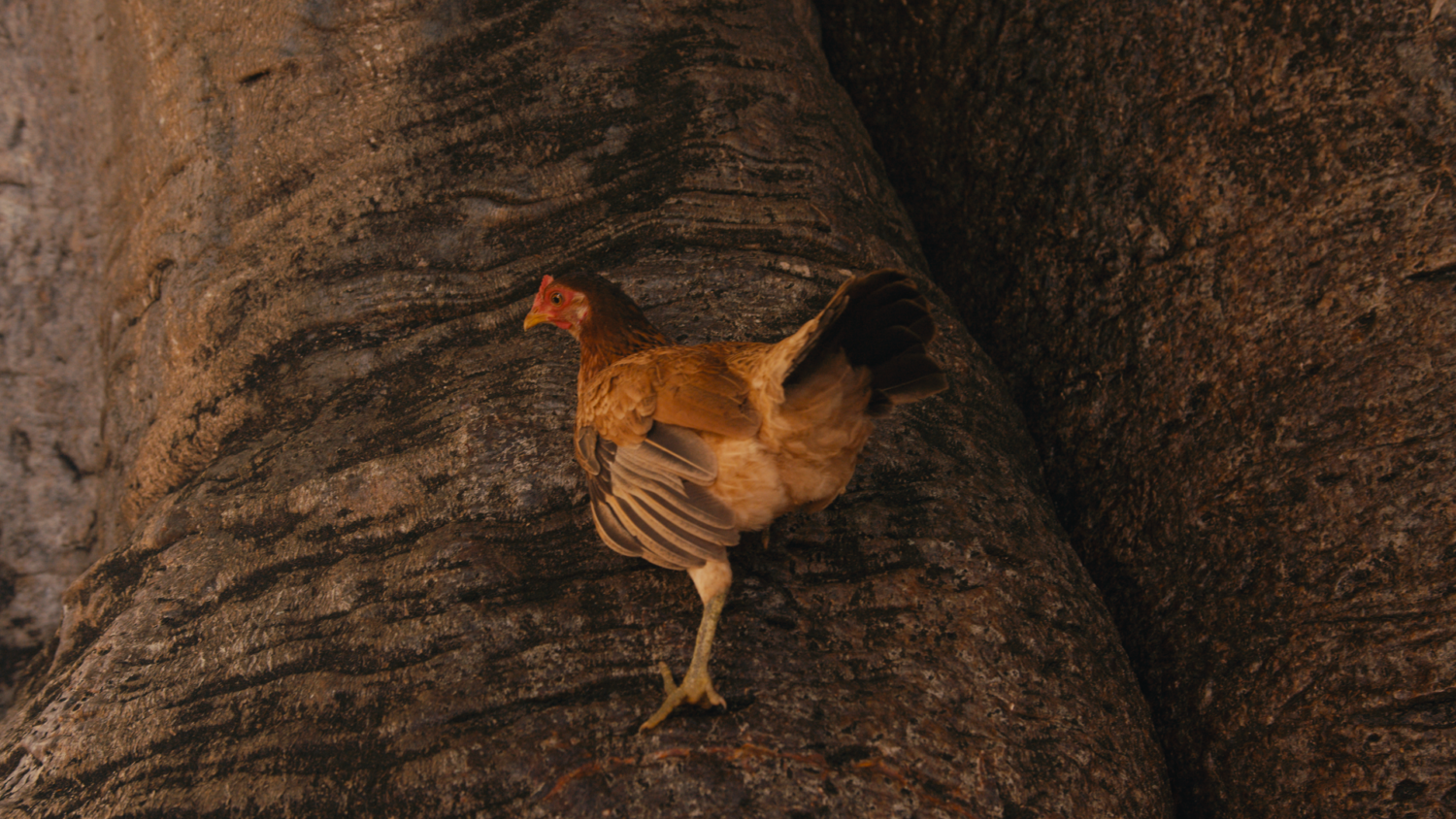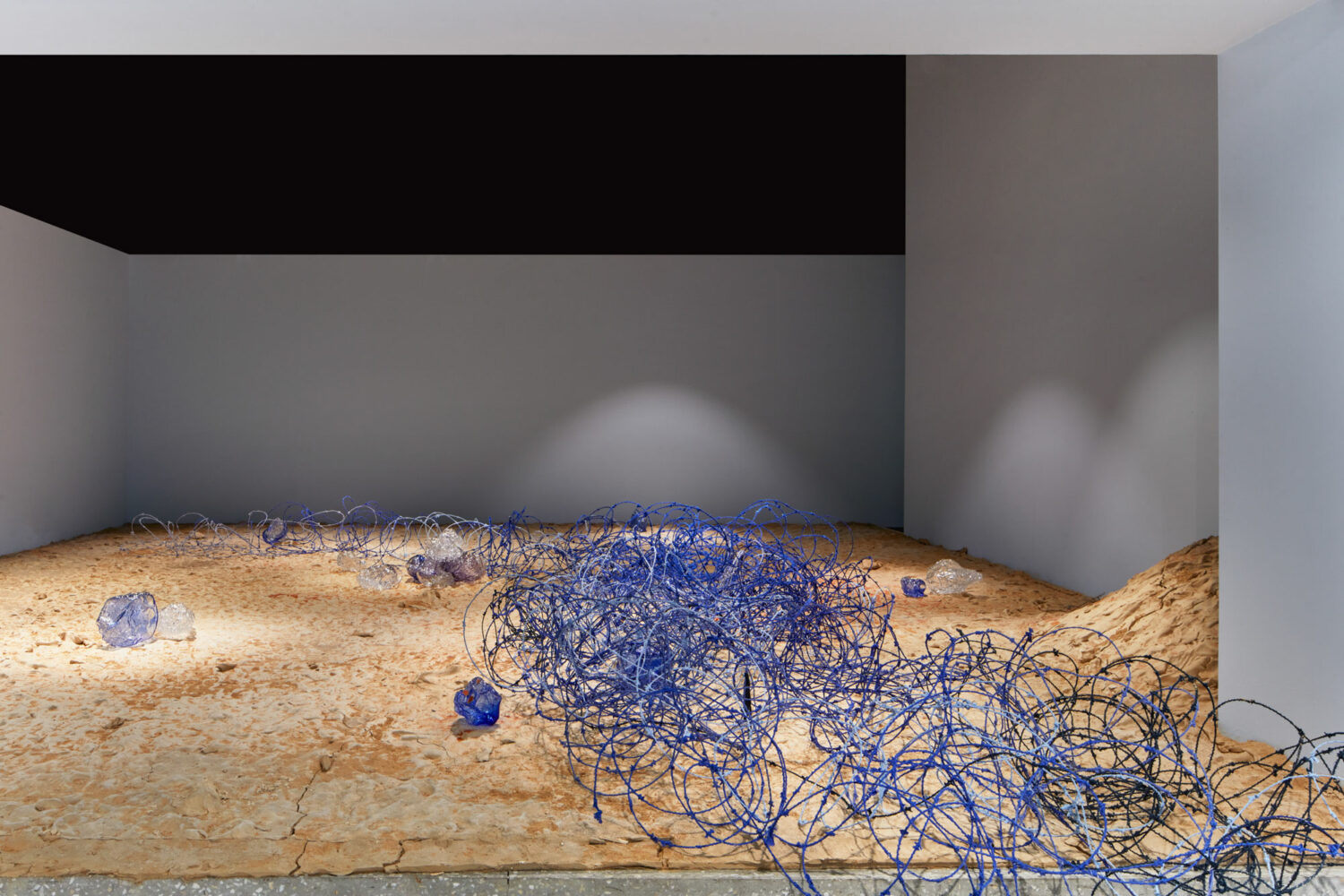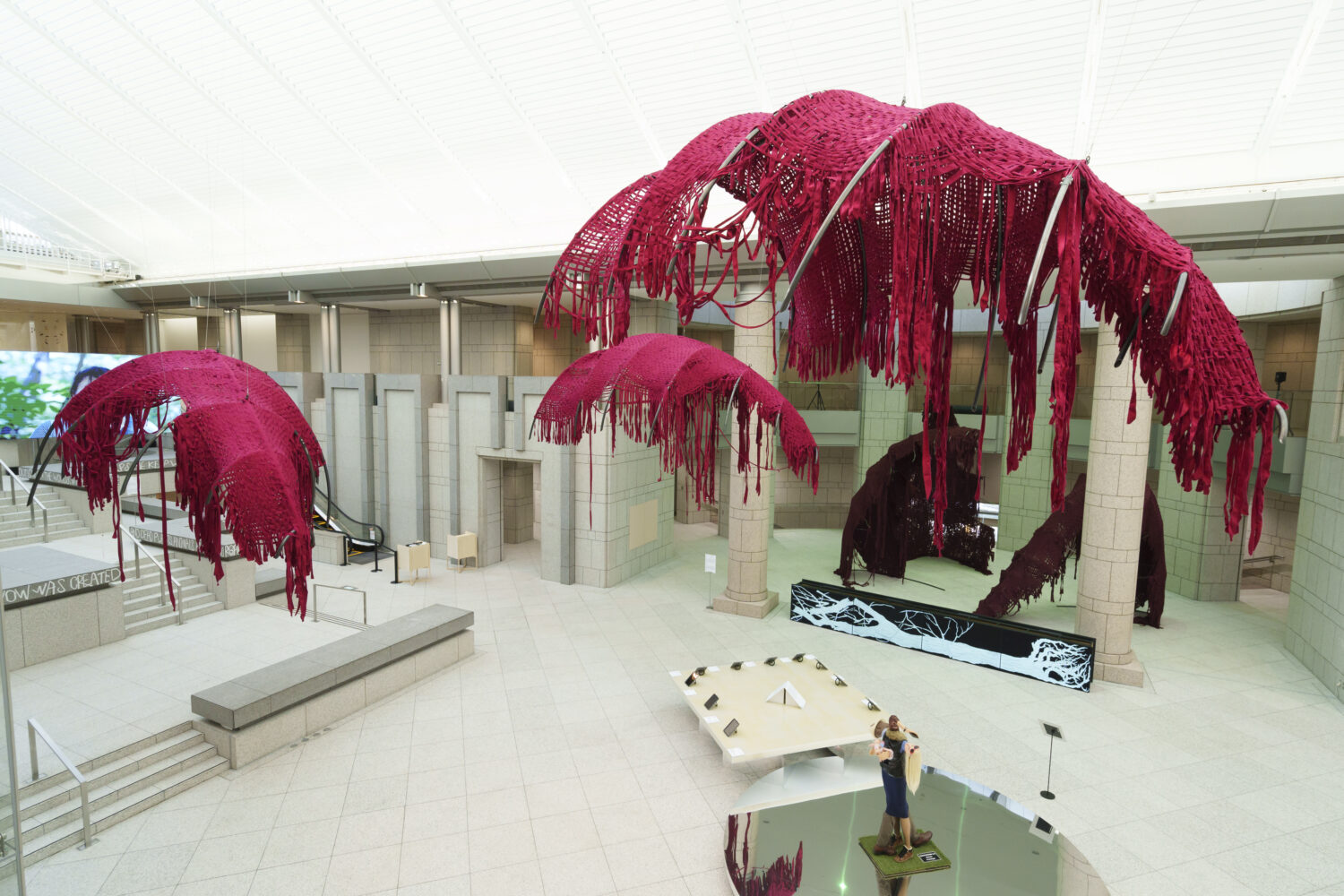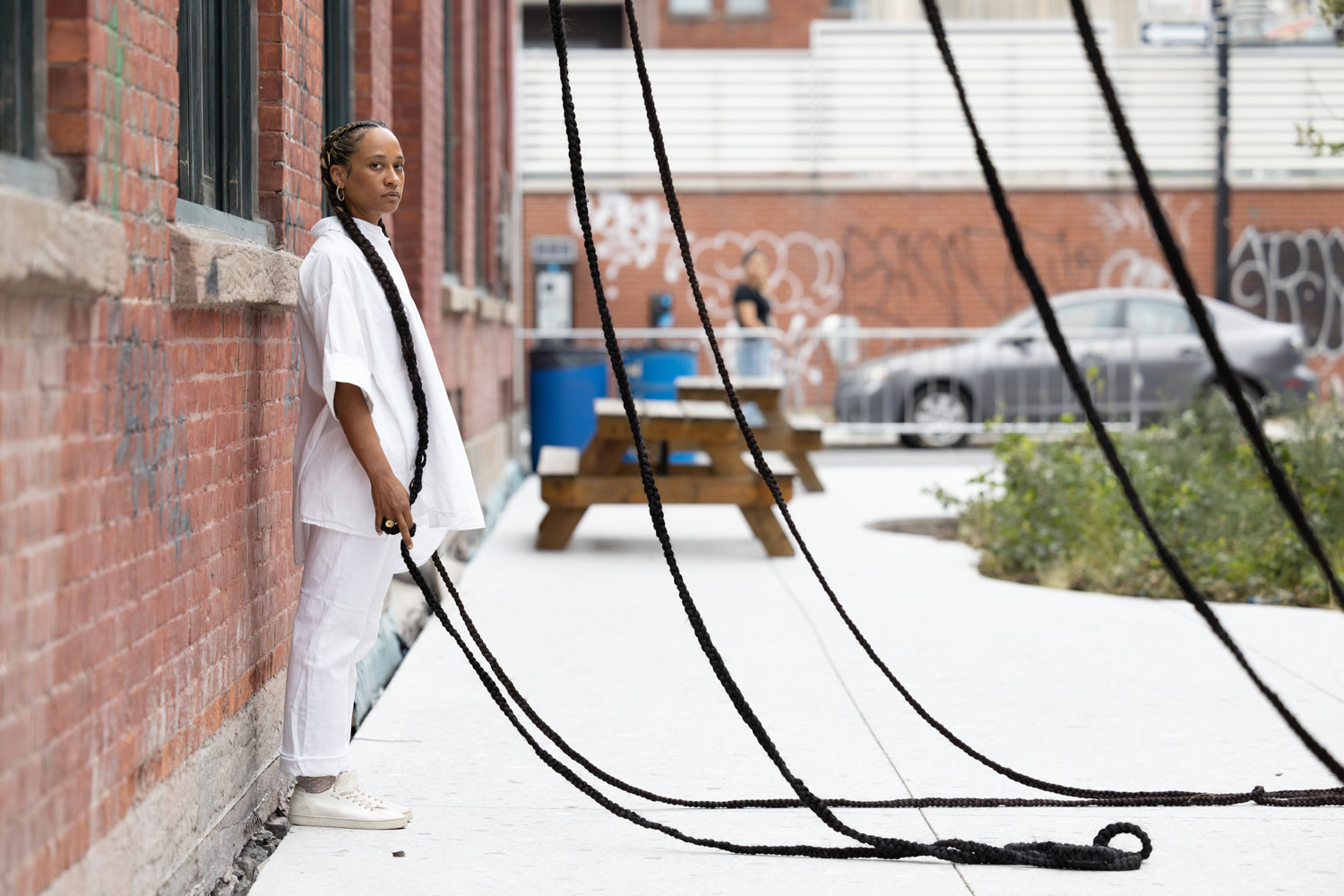Black Ancient Futures: Meet the Artists Behind MAAT Lisbon’s Major New Exhibition
By Keshav AnandInaugurating the MAAT – Museum of Art, Architecture and Technology’s autumn programme from 18 September 2024, Black Ancient Futures brings together a group of African and diaspora artists to Portugal’s capital for an exhibition that reimagines the past, present, and future of the Black artistic experience on a transcontinental scale. The participating artists have been invited to speculate on utopian imaginings of abundance and well-being, challenging geographical hierarchies through their visions.
The exhibition’s curators, João Pinharanda and Camila Maissune, tell Something Curated: “We thought of an exhibition that can be freed from the weight of a past that is only thought of in terms of its negativity and a present thought of mainly as a replacement project. We thought of an exhibition that would bear witness to a future of abundance and well-being, of purification and healing, a future anchored in a utopian pre-colonial past rich in knowledge and mythologies, freed from the geographical and political constraints that have conditioned the continent and freed from the hierarchies (cultural, aesthetic and commercial) imposed by Western modernism on African and diasporic artistic realities.”

The artists featured in Black Ancient Futures represent a dynamic scope of creative voices from around the world. The line-up includes Jota Mombaça, Jeannette Ehlers, Evan Ifekoya, Nolan Oswald Dennis, Sandra Mujinga, April Bey, Gabriel Massan, Tabita Rezaire, Kiluanji Kia Henda, Lungiswa Gqunta, and Baloji. Hailing from the Democratic Republic of the Congo, Angola, South Africa, Zambia, Nigeria, Brazil, Trinidad, The Bahamas, and beyond, these artists offer diverse perspectives that challenge, inspire, and expand the imagination.
On the thinking behind the artists included, the curators explain: “This exhibition is inaugural in both Lisbon and Portuguese contexts. On the one hand, we have the international relevance of all the artists (only 4 of them have shown their work in collective exhibitions in Lisbon or Porto), and on the other, it is the most extensive presentation of a new generation of African and diasporic artists yet seen in Portugal. The discourse of the selected artists and the works chosen gives us the opportunity to approach Black artistic experiences from a point of view that we consider innovative, thus changing the traditional narratives around African art and the diaspora.

The works evoke mysticism, mythology, and science fiction, exposing the roots of abundance, well-being and care that we want to be the image and voice of this exhibition. Most of all, the selected artists do not mask the cruel problem of colonial oppression and pillage, exploitation, and violation (of beings, cultures, and resources), nor do they hide the persistent difficulties of affirming Black identities today. But these works don’t stop at the realities of historical time: they propose future spaces and times, realities of rupture and renewal.”
In her work, participating artist Sandra Mujinga plays with economies of visibility and opacity, negotiating questions of self-representation and surveillance across text, sculpture, performance, and dance as well as the Internet and the digital image. Elaborating on her installation on view in the upcoming MAAT show, the artists tells SC:
“I will present a large-scale installation titled And My Body Carried All of You, 2024, which was first shown at the Yokohama Triennale. This work is composed of three sculptures, each approximately 2 x 3.5 x 7 metres, made of steel and fabric. The work continues my exploration of dinosaurs—these ancient, speculative bodies—as a means to engage with notions of temporality and fragility. The fabric woven together after intentionally tearing it evokes the paradox of skin—an entity that perpetually heals while simultaneously deteriorating. The steel structures, monumental in scale, stand as visible skeletons, embodying vulnerability and the passage of time. Through this, archaeology transforms into a site of speculation, where the title of the work reflects a meditation on how we carry not only the weight of history but also the burdens and emotions of one another, as witnesses to love and grief.”

Mujinga continues, “Daylight will play a crucial role in this installation, an element I’ve long been fascinated by. Natural light can shape and dictate a space’s perception, a concept I explored in my earlier work Worldview,2021, first exhibited at the Swiss Institute. Here, I examined the idea of windows as screens, questioning whether what we perceive through them is merely a high-resolution image mimicking the natural and familiar. This inquiry feels even more pertinent today, in an era where the sight of an orange sky on the news makes us question the very nature of what we consider “natural.” The interplay between the familiar and the fabricated, the real and the speculative, continues to drive my practice, as I seek to navigate and understand the complex layers of our interaction with this world.”
Berlin-based multidisciplinary artist Gabriel Massan combines storytelling and worldbuilding to probe situations of inequality within the Latin American experience. Framed through a conceptual practice they call “fictional archaeology,” and working across 3D animation, digital sculpture, games, sound, and interactive installations, the artist challenges warped conceptions of the so-called “Third World” while investigating possibilities for subversive otherness.
Discussing the work they are showing as part of Black Ancient Futures, Massan notes, “I am showing an up-to-date version of the videogame installation Third World: The Bottom Dimension. The show is an opportunity to create a space for the visitors to fully be immersed in the world I am building in the game. You can see it as an expanded video game centre kinda.” Massan adds: “I primarily look at the digital realm as the starting point for my sculptural practice. It is where I mostly work and where the elements I create thrive in. Lately, I’ve started to look at the physical space as a possible extension to the digital one, instead of the contrary. Working digitally has allowed me to undo physical or social constraints, which I am now working to play around or undo IRL.”

On the exhibition’s opening night, 17 September, Danish-Trinidadian artist Jeannette Ehlers will present her performance work, We’re Magic. We’re Real #3 (These Walls). Ehlers, who is presenting two works in the exhibition, began developing the performance series We’re Magic, We’re Real in 2020. The entire series makes use of hair as an important identity marker among the African diaspora, as a simple yet powerful gesture. Performers with African heritage will be connected to MAAT’s facade by way of long cornrows, as if the braids were growing out of the walls, which will remain on display at MAAT throughout the exhibition.
Black Ancient Futures runs at MAAT – Museum of Art, Architecture and Technology, Lisbon from 18 September 2024–17 March 2025.
Feature image: Gabriel Massan, Third World: The Bottom Dimension, 2023